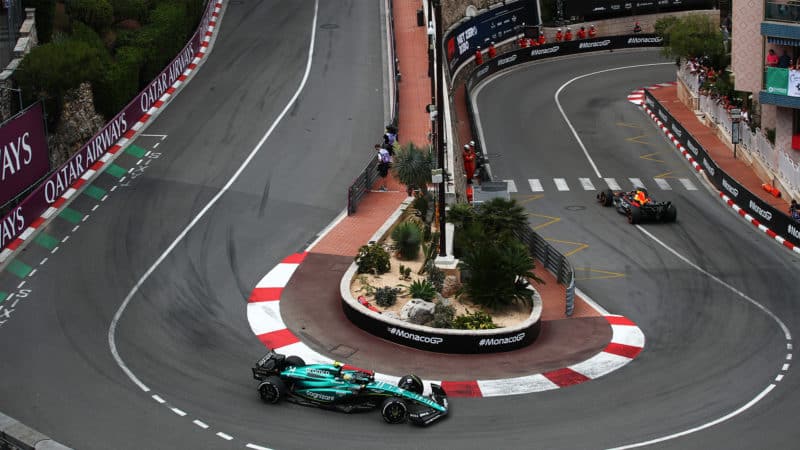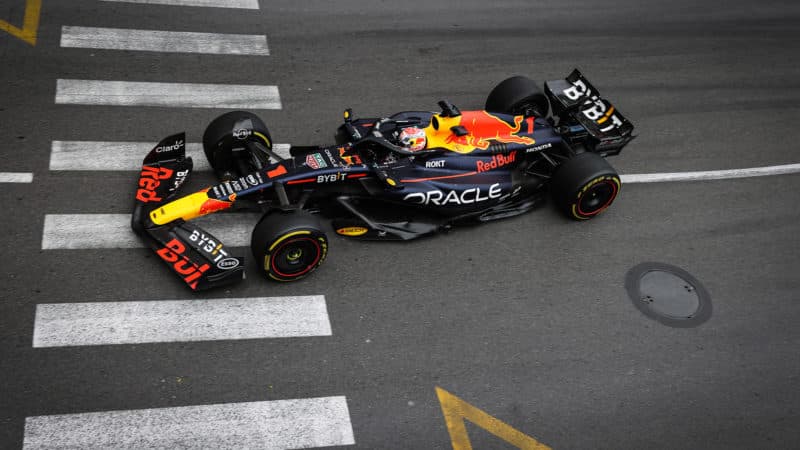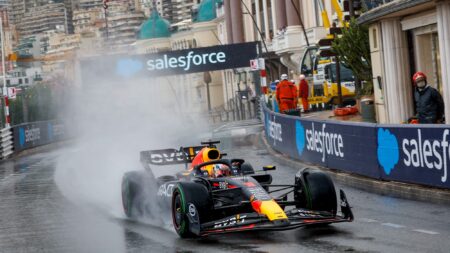So the Aston was faster in sectors 1 and 2 and by the time Verstappen was approaching the swimming pool he was almost 0.3sec adrift. In the final sector, he clawed back all that time, plus an extra eight-hundredths with an extraordinary display of ragged edge commitment.
It had taken all Verstappen’s genius to put a tricky combination on pole. But once in the race, with everyone’s tyres up to temperature, it could be expected much of the Red Bull’s usual pace advantage would be there, and so it proved.
Getting the gaps
Once he’d won the start, Verstappen’s order of tasks were to get out of undercut range (around 2.5sec) and thence establish a safety car margin (around 10sec), all while keeping his more delicate tyres in good shape. These tasks were achieved after nine laps and 22 respectively. From there, he just maintained the gap – albeit at a pace around 1.5-2sec off what was possible if he’d just driven all-out (as demonstrated by the last-place starting team-mate Sergio Perez, who after making a switch of tyres on the first lap was pushing to catch the tail of the pack).

Verstappen eventually had a gap of more than 10sec over Alonso before the rain came
Joe Portlock/F1 via Getty Images
Without safety cars, only Alonso was even the vaguest threat to Verstappen – as Esteban Ocon in third had chosen a very gentle pace in his Alpine in order to look after his mediums, bunching the Ferraris, Mercs and team mate Pierre Gasly behind him. So he was 10sec behind Alonso after as many laps.
Managing the change to inters
The rain arrived, Alonso pitted – but had a set of mediums fitted! “It was very clear that the track on that lap we stopped was completely dry, apart from Turn 7 and 8,” he explained. “So, I stopped for dries. The weather forecast, it was small shower, and the small quantity of rain as well, what we had, as a team, and we had a lot of margin behind us, to put the dry tyres and, if necessary, the inter tyres. But that minute and a half that it took to go through Turns 5, 6, 7 and 8 again, it changed completely, and was very wet when I go to those corners, but the lap that we stopped, it was completely dry.”





